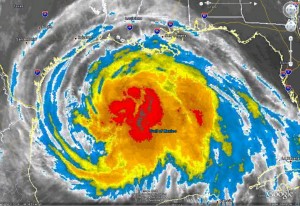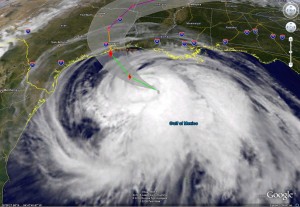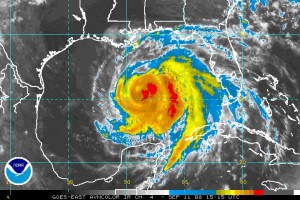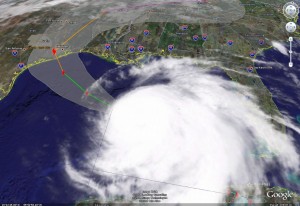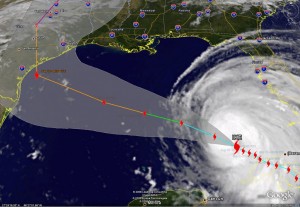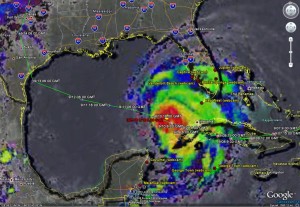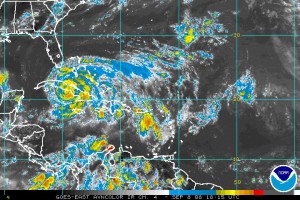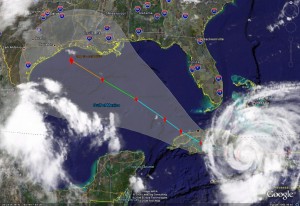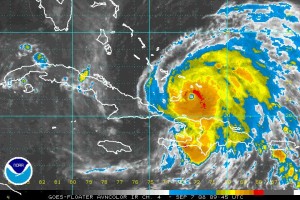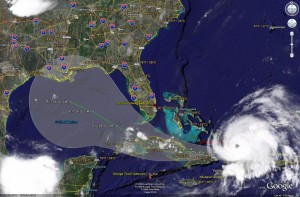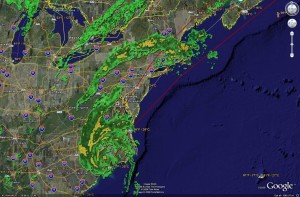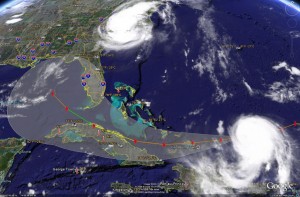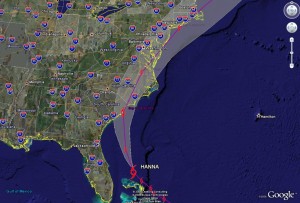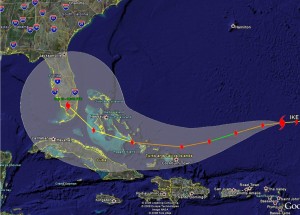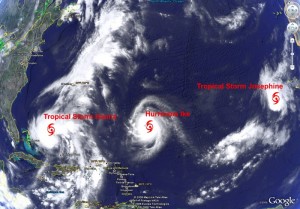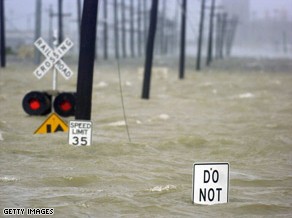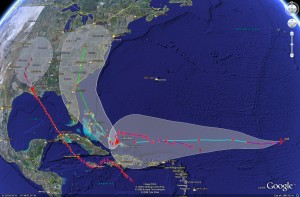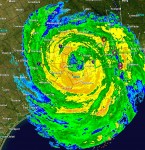
The eye of Hurricane Ike made landfall Saturday morning as a category 2 storm with winds of 110 mph at 1:10am MDT. Long before that though the effects of the storm were being felt as the winds and storm surge began to batter Galveston Island and the Texas coast. Now the waiting for daybreak begins as no one is sure exactly what will be found once daylight comes.
The sheer size of this massive storm has wreaked havoc across much of the Texas and Louisiana coast. Measuring 900 miles wide, Ike’s tropical storm-force winds extended out to 275 miles – effectively the length of the Texas coastline – from its center. Evacuation orders were issued for over 1 million people but tens of thousands are expected to have taken the chance and tried to ride the storm out raising fears of potentially massive counts of dead. Area officials were telling those that stay behind to write their social security numbers on their arms so their bodies could be identified in the worst case scenario.

The Galveston County Office of Emergency Management has said on its website, “Much of the Galveston Island is currently flooded and there are several fires in that area.” Emergency management officials have reported receiving numerous calls asking for help but rescuers will be unable to aid anyone for hours until the storm subsides. In perhaps one of the most dramatic moments, early yesterday evening a distress call was received from a 584-foot Cyprus-flagged freighter that was adrift without power 90 miles from the center of the storm. The Coast Guard sent planes and helicopters to attempt a resuce of the 22 people on board but were forced to turn back due to the conditions. The ship was told they would simply have to ride it out.
Now the world waits for daybreak to see what sort of devastation Ike has brought to Texas.

